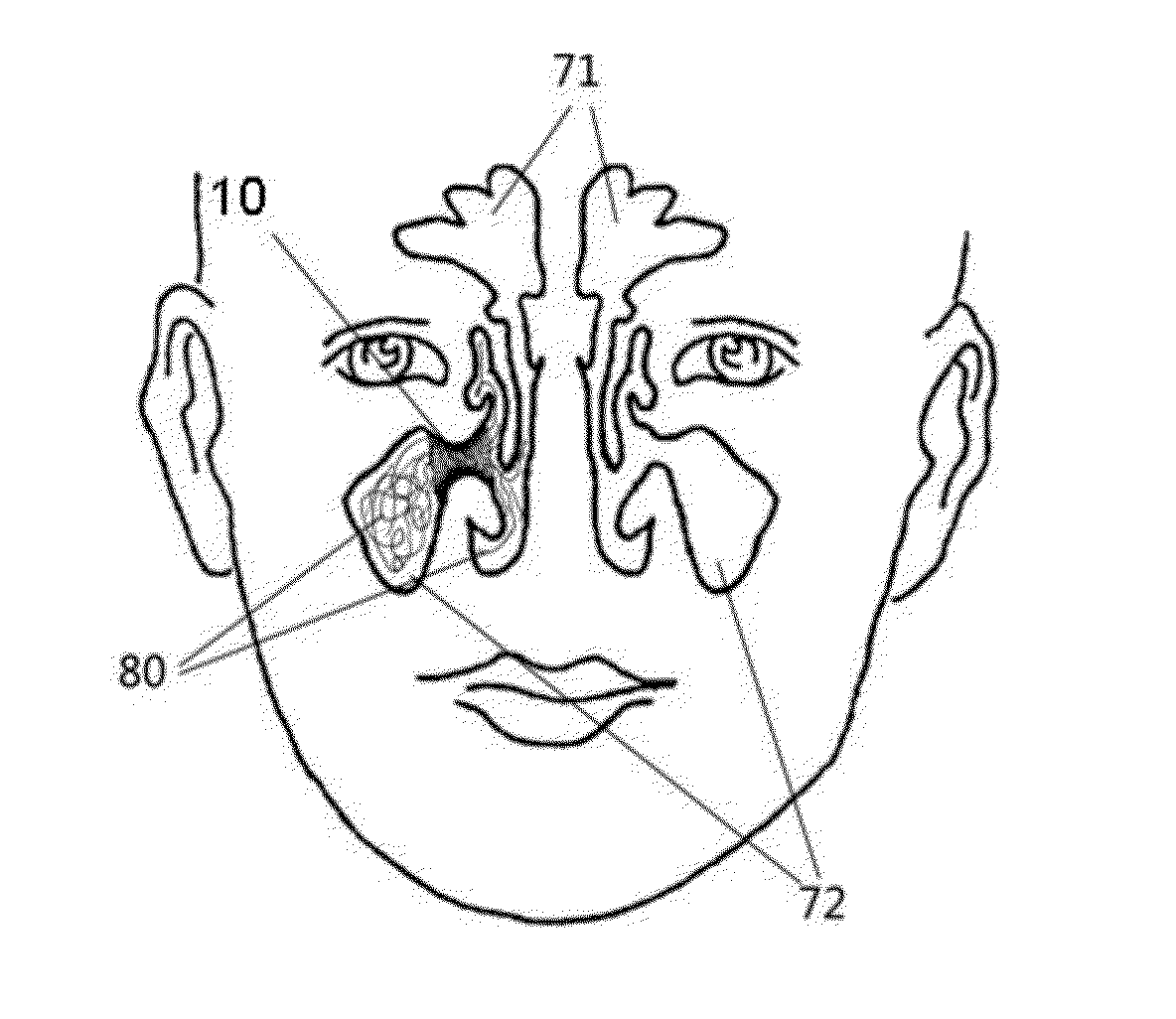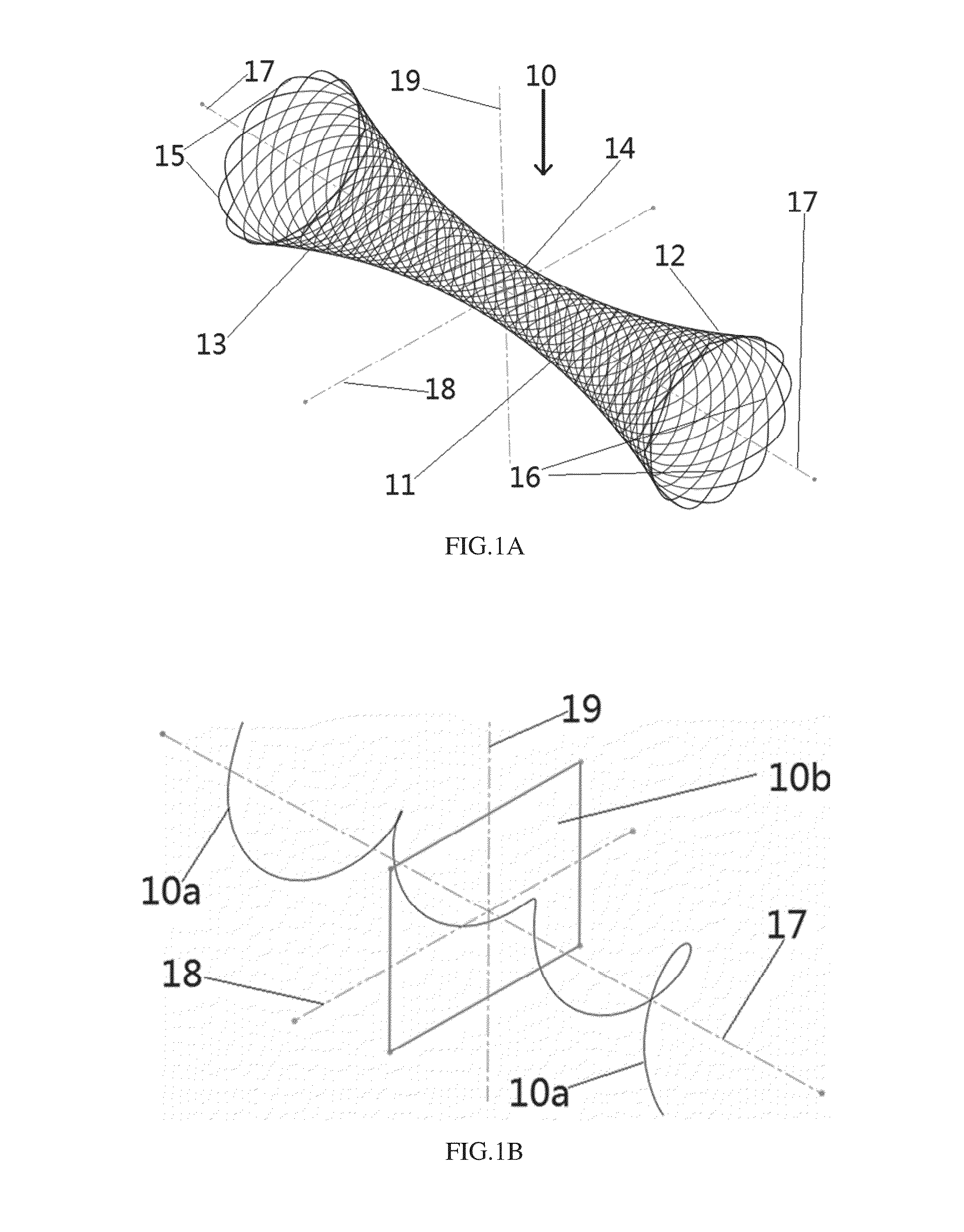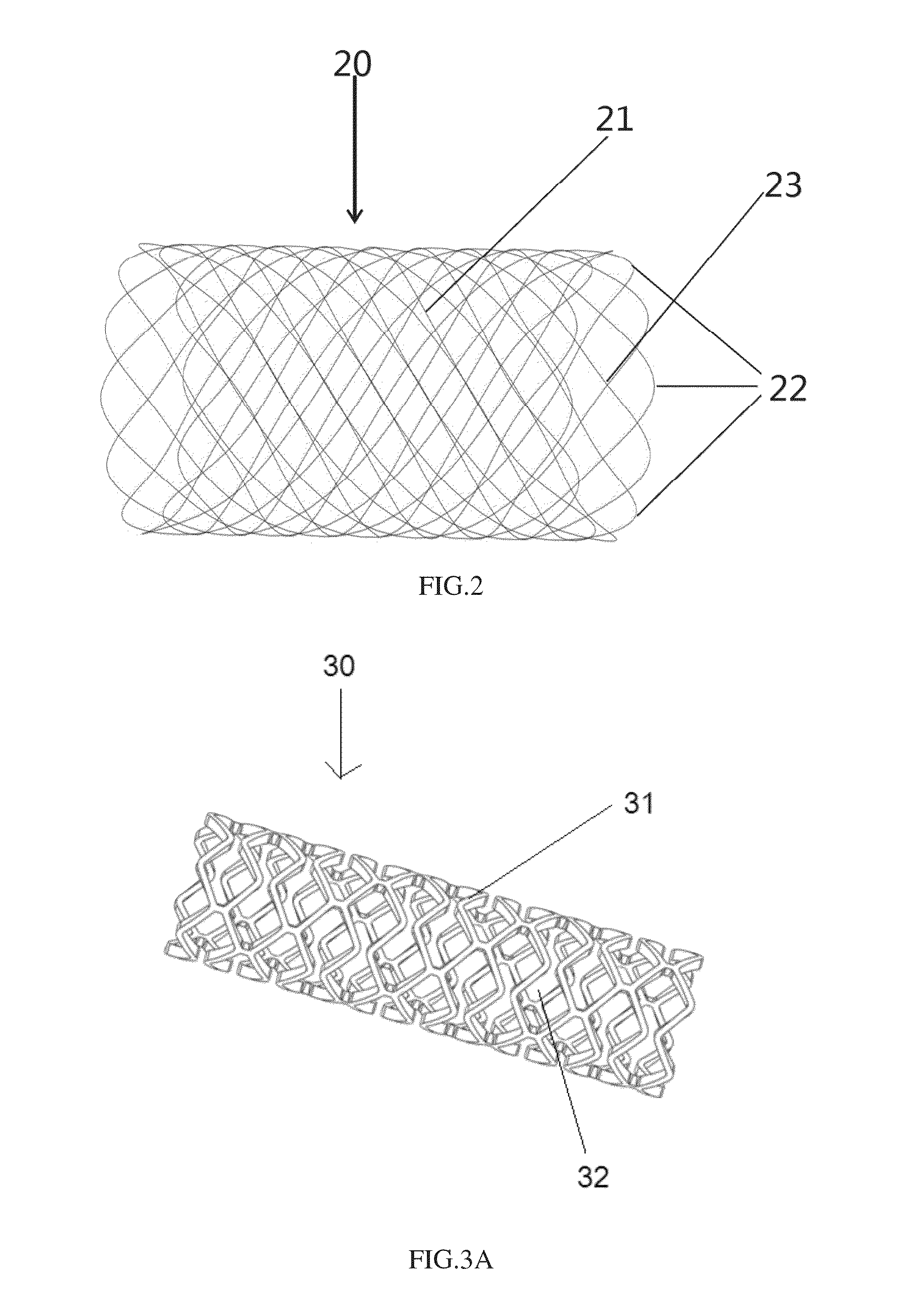Implanted system for treating sinusitis or allergic rhinitis
a technology for allergic rhinitis and sinusitis, applied in the field of medical devices, can solve the problems of inability to successfully reach drugs, pain in the throat, and pain in the nose, and achieve the effects of enhancing the therapeutic effect, stable drugs, and sustained release
- Summary
- Abstract
- Description
- Claims
- Application Information
AI Technical Summary
Benefits of technology
Problems solved by technology
Method used
Image
Examples
embodiment 1
[0052]Referring to the FIGS. 1A-1B, an implanted system 10 for treating sinusitis or allergic rhinitis in accordance with one preferred embodiment of the invention is woven from monofilaments, which are formed of a biodegradable polymer. The implant 10 has a circumferentially extending wall 11, which is closed in the circumferential direction, namely the wall 11 defines a closed tubular structure in the circumferential direction with two open ends. The wall 11 is woven from monofilaments with a plurality of interspaces between weaving fibers, thus the wall 11 has a certain degree of flexibility and can be moderately compressed and expanded.
[0053]The amount or density of monofilaments for the implant 10, in particular with a same diameter and length, can be controlled by the number of back bending points 15 at two ends of the implant during weaving. The amount / density of monofilaments is larger when the number of back bending points 15 is increased, thus the support force of the impl...
embodiment 2
[0068]As shown in FIG. 2, an implanted system 20 for treating sinusitis or allergic rhinitis in accordance with another preferred embodiment of the invention is woven from monofilaments, which are formed of the biodegradable polymer. The implant 20 has a circumferentially extending wall 21, which is closed in the circumferential direction, namely the wall 21 defines a closed tubular structure in the circumferential direction with two open ends. The wall 21 is woven from monofilaments with a plurality of interspaces therebetween, thus the wall 21 has a certain degree of flexibility and can be moderately compressed and expanded. As discussed in above embodiment, the properties of the implant, such as compressibility before the implantation, delivery ability during the implantation, the therapeutic effect after the implantation, etc., can be balanced by adjusting number of the back bending points 22 at ends and the surrounding helix angle of monofilaments during weaving. If the number ...
embodiment 3
[0072]As shown in FIGS. 3A-3B, an implanted system for treating sinusitis or allergic rhinitis in accordance with yet another preferred embodiment of the invention comprises a cylindrical base body 30. A wall 31 of the base body 30 has interspaces 32 formed by laser cutting. The implanted system also comprises extended end portions, which are woven by monofilaments interspersed in interspaces 32 axially outwardly from the ends of the base body 30.
[0073]FIG. 3A shows the base body 30 with a constant diameter formed of a laser cut hollow tube, wherein base body 30 with the constant diameter has a circumferentially extending wall 31, which is closed in the circumferential direction, namely the wall 31 defines a closed tubular structure in the circumferential direction with two open ends, i.e., the base body 30 with the constant diameter is formed as a cylindrical structure. The wall 31 is a plate-like structure of a biodegradable polymer, and then interspaces 32 with various shapes and...
PUM
| Property | Measurement | Unit |
|---|---|---|
| Biodegradability | aaaaa | aaaaa |
Abstract
Description
Claims
Application Information
 Login to View More
Login to View More - R&D
- Intellectual Property
- Life Sciences
- Materials
- Tech Scout
- Unparalleled Data Quality
- Higher Quality Content
- 60% Fewer Hallucinations
Browse by: Latest US Patents, China's latest patents, Technical Efficacy Thesaurus, Application Domain, Technology Topic, Popular Technical Reports.
© 2025 PatSnap. All rights reserved.Legal|Privacy policy|Modern Slavery Act Transparency Statement|Sitemap|About US| Contact US: help@patsnap.com



